How to Fix Windows Update Error Code 0x80070008?
0x80070008 is an Error code in Windows which means ERROR_NOT_ENOUGH_MEMORY. Usually, you will encounter this error when trying to install the latest update for your Windows. This error occurs due to insufficient space on your disk which prevents Windows from updating and as a result, you receive the “Error(s) found: Code 80070008. Windows update ran into a problem” error message.
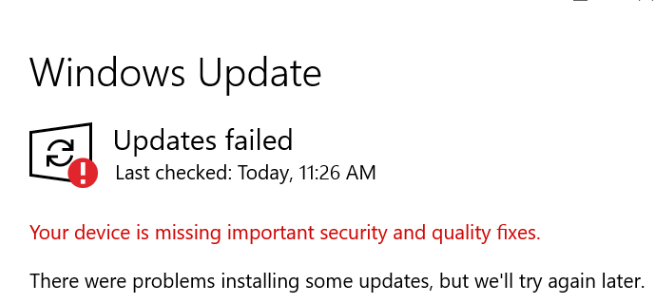
This guide will show you the methods for resolving the 0x80070008 Windows Update Error.
How do I fix error 0x80070008?
There are many solutions you can try to get this issue resolved, we have many solutions listed down below try these solutions one by one to get down to the root cause of this issue and fix it.
1. Use Disk Cleanup to free space
Having insufficient space on your system prevents Windows from installing its updates. Therefore, you must make sure to free space from your disk to make room for the installation process. You can use disk cleanup which is a built-in tool on Windows to delete unwanted space from your system. You can use disk cleanup with the instructions below:
- Press the Windows key and open the start menu.
- Type “Cleanup” and select the “Disk Cleanup” app.
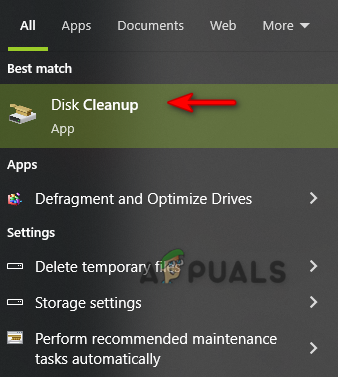
Opening disk cleanup - Select the Default drive and click OK. (In this case, C: Drive is the default drive)
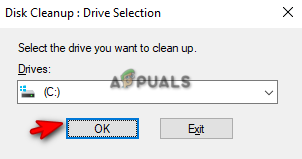
Selecting default drive - Check the boxes to delete the files you want and click OK.

Deleting unwanted files
2. Delete Temporary files from your system
Windows consists of a folder that saves all the temporary files on your system. When this folder gets corrupted, it will cause storage issues on Windows and as a result will become a reason why you are unable to install a Windows update. Therefore, deleting these temporary files will help you free corrupted data from your system.
- Open the run command with the Win + R keys.
- Type “%temp%” and click OK to open the temporary files folder.
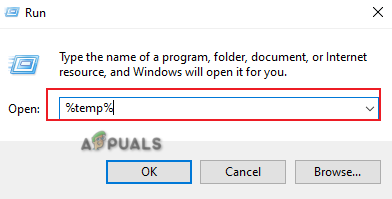
Opening temporary folder - Press Ctrl + A +Delete to delete all files in the folder.
3. Run Windows Update troubleshoot
Windows troubleshooting is a built-in tool in Windows that allows you to detect problems with your system and provides solutions to fix them. You can use this tool to scan the issue faced during your Windows update process and fix the issue according to the solutions provided by the troubleshooter.
- Open Windows Settings with the Win + I keys.
- Navigate to Update and Security > Troubleshoot.
- Select “Additional troubleshooter” on the Troubleshoot page.
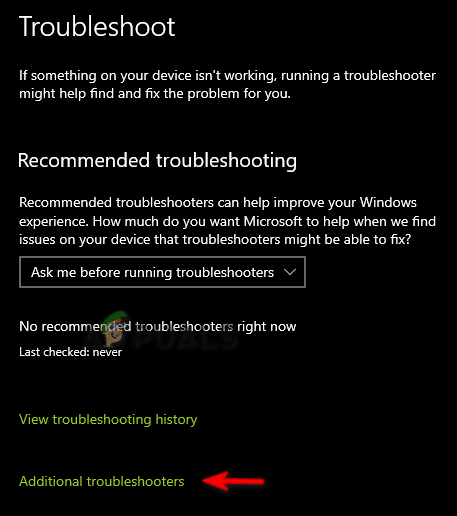
Additional troubleshooters - Click “Windows Update” under “Get up and running” and select “Run the troubleshooter”
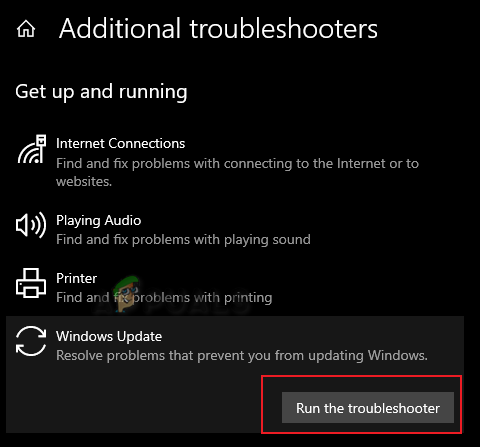
Running windows troubleshooter - After the tool has detected the problem, select the provided solutions.
4. Disable Antivirus Software
Although antivirus software provides protection to your system from third-party access, they are also known to interfere during the installation of certain Windows Updates. Therefore, before you update your windows, make sure that you have disabled any installed antivirus software on your system. You can disable the third-party software using the instructions listed below:
Disabling Avast Antivirus
- Open the Avast Antirus Software.
- Navigate to Menu > Settings > Protection.
- Turn off the “Core Shields” toggle button.
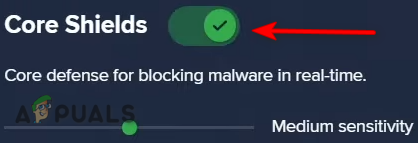
Turning off the Avast Core Shield - Scroll down to the Configure shield settings section.
- Uncheck all “Enable Shield” boxes.
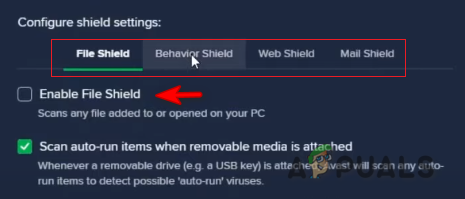
Disabling shield protection - Close the Antivirus software and restart your computer.
5. Manually update Windows
You also have an option to manually update the latest Windows updates from the Microsft Update Catalog. Using the update catalog, you can download and install any windows update as per your choice. Below is the process for manually updating your Windows using the MS Update Catalog:
- Go to the Official Microsoft Update Catalog.
- Search for your Windows in the search bar (Here we have used Windows 10).
- Download the latest update available on the list.

Downloading Windows update - Select the folder on your file explorer.
- Open the browser’s download page.
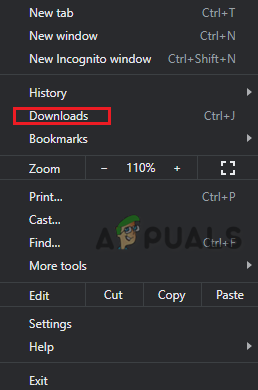
Downloads page - Locate the update in the file explorer.

Opening file location - Right-click on the file and select “Extract Here.”
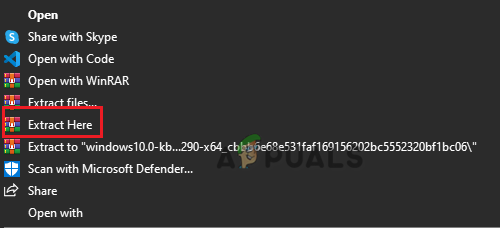
Extracting file - Doubl-click on the extracted package to start the installation.
- After the installation is completed, restart your computer.
6. Perform a clean boot to install updates
Clean boot is a feature in Windows that boots your system with a minimal set of drivers and programs. This helps you find the culprit that is interfering with your Windows updates and preventing them from being installed on your system. Therefore, you must perform a clean boot and install the available update on your Windows from that state.
- Open the run command with the Win + R keys.
- Type “msconfig” and click OK.

Opening System Configuration - Open the General tab and select “Normal startup” under Startup selection.

Opening Normal startup - Open the Startup tab and click on “Open Task Manager”
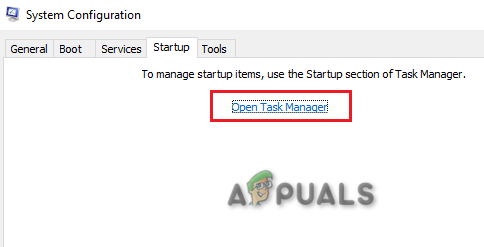
Opening Normal startup - Enable each disabled startup.
- Click Apply and OK to confirm the actions.
- Lastly, restart your computer.
7. Manually reset Windows Update components
You can also resolve this error by manually resetting the Windows update components. For this method, you will be running the script given below with administrative privileges. This script will Stop the Windows Update services, Delete the Windows Update cache, Register Windows Update DLLs, and lastly Reset the Windows Update components. Following is the script to reset Windows update components:
- Save the script given below in a file with a .bat extension (e.g. “WindowsUpdateFix.bat”).
- Run the script with administrator privileges by right-clicking the file and selecting “Run as administrator”.
@echo off echo Stopping Windows Update services... net stop wuauserv net stop cryptSvc net stop bits net stop msiserver echo Deleting Windows Update cache... rmdir /S /Q C:\Windows\SoftwareDistribution rmdir /S /Q C:\Windows\System32\catroot2 echo Registering Windows Update DLLs... regsvr32.exe /s wuaueng.dll regsvr32.exe /s wuaueng1.dll regsvr32.exe /s atl.dll regsvr32.exe /s wups.dll regsvr32.exe /s wups2.dll regsvr32.exe /s wuweb.dll regsvr32.exe /s wucltui.dll echo Resetting Windows Update components... net start wuauserv net start cryptSvc net start bits net start msiserver ren C:\Windows\SoftwareDistribution SoftwareDistribution.old ren C:\Windows\System32\catroot2 catroot2.old sc.exe sdset wuauserv D:(A;;CCLCSWRPWPDTLOCRRC;;;SY)(A;;CCDCLCSWRPWPDTLOCRSDRCWDWO;;;BA)(A;;CCLCSWLOCRRC;;;AU)(A;;CCLCSWRPWPDTLOCRRC;;;PU)
8. Use Media Creation Tool
If none of the methods worked, then you must resort to using the Media Creation Tool. The main purpose of this tool is to install your Windows to the latest version and perform a clean install of Windows. However, this method requires you to save your data into a backup file as it may get deleted during the process. Do note that you should only perform this method as a last resort.





